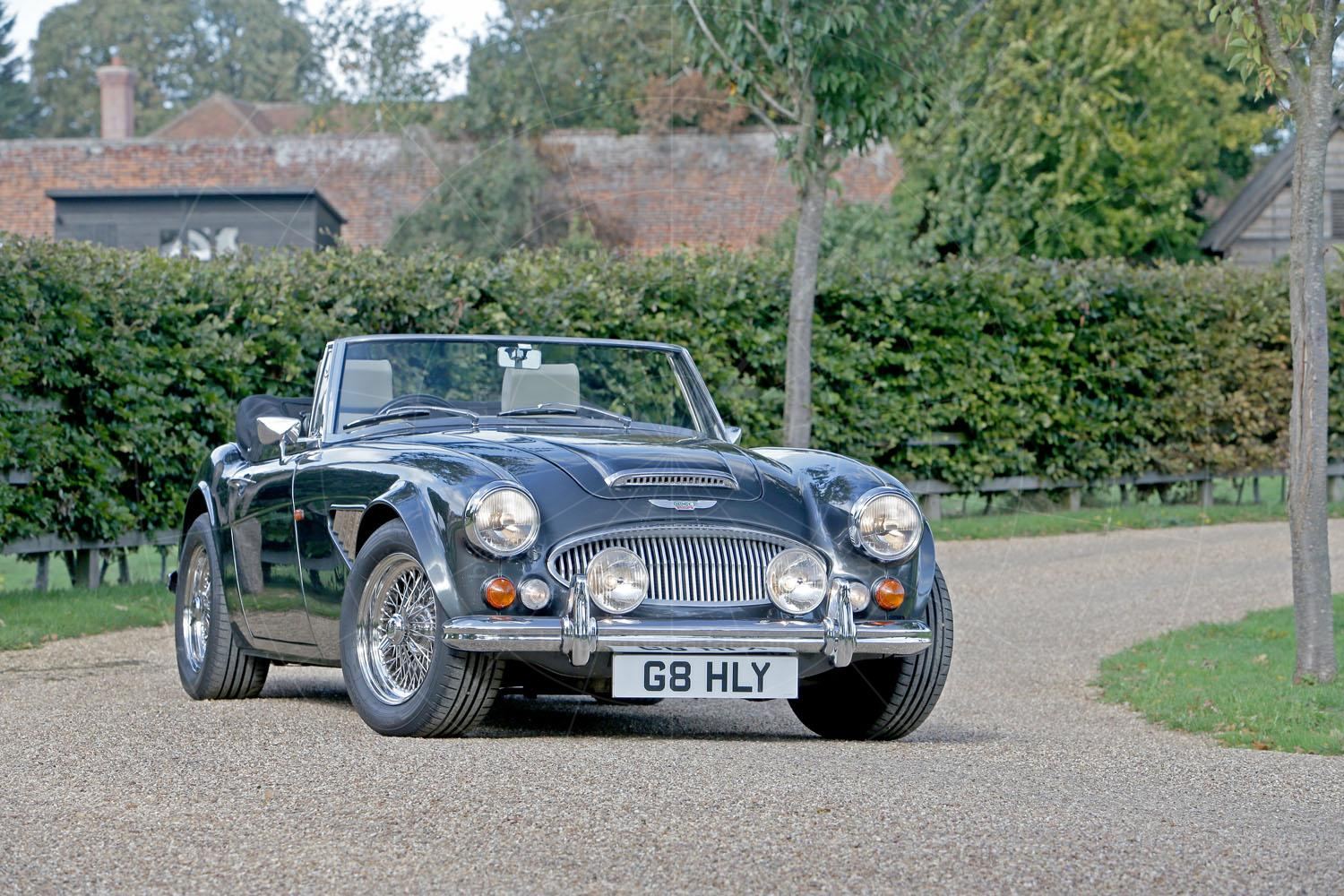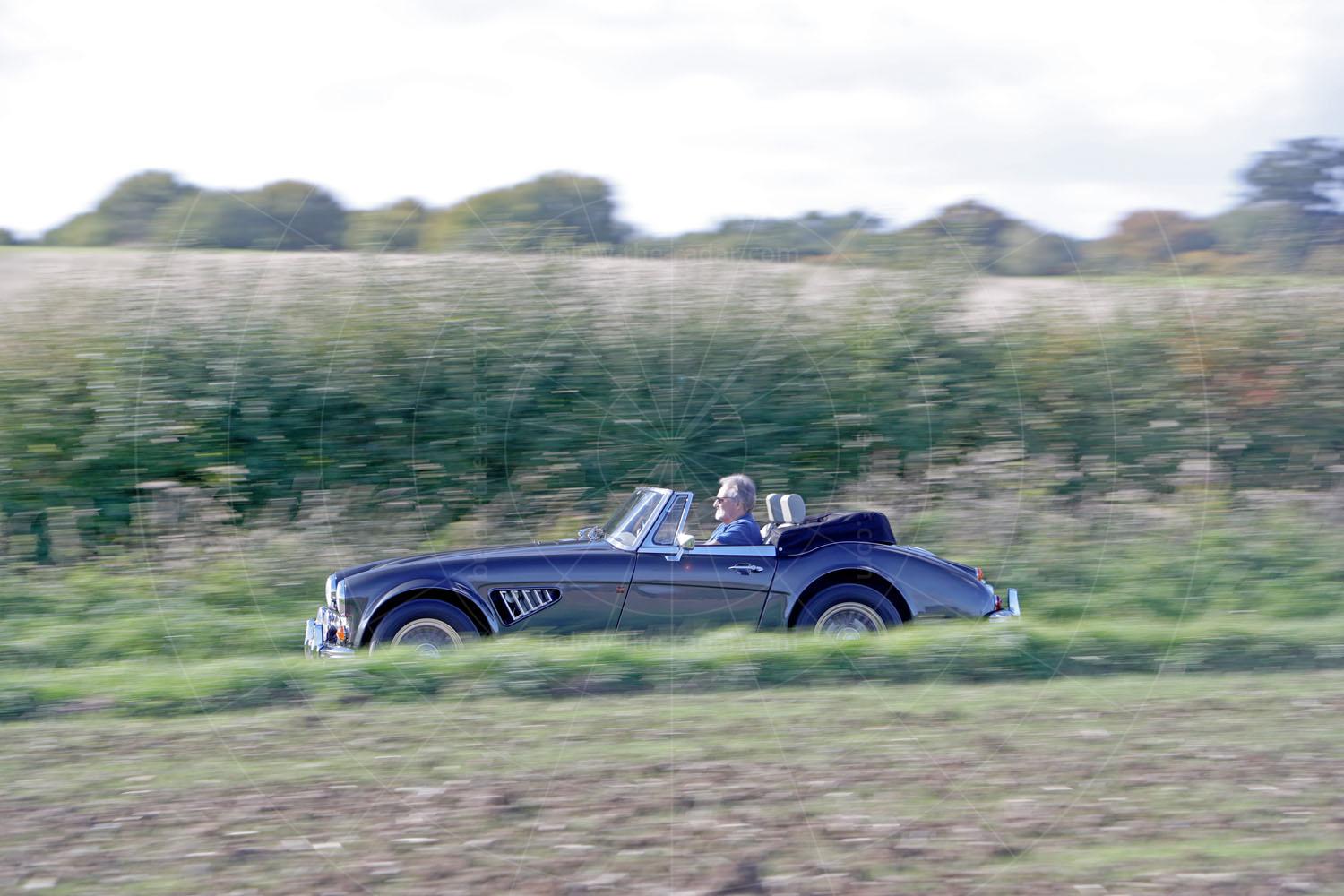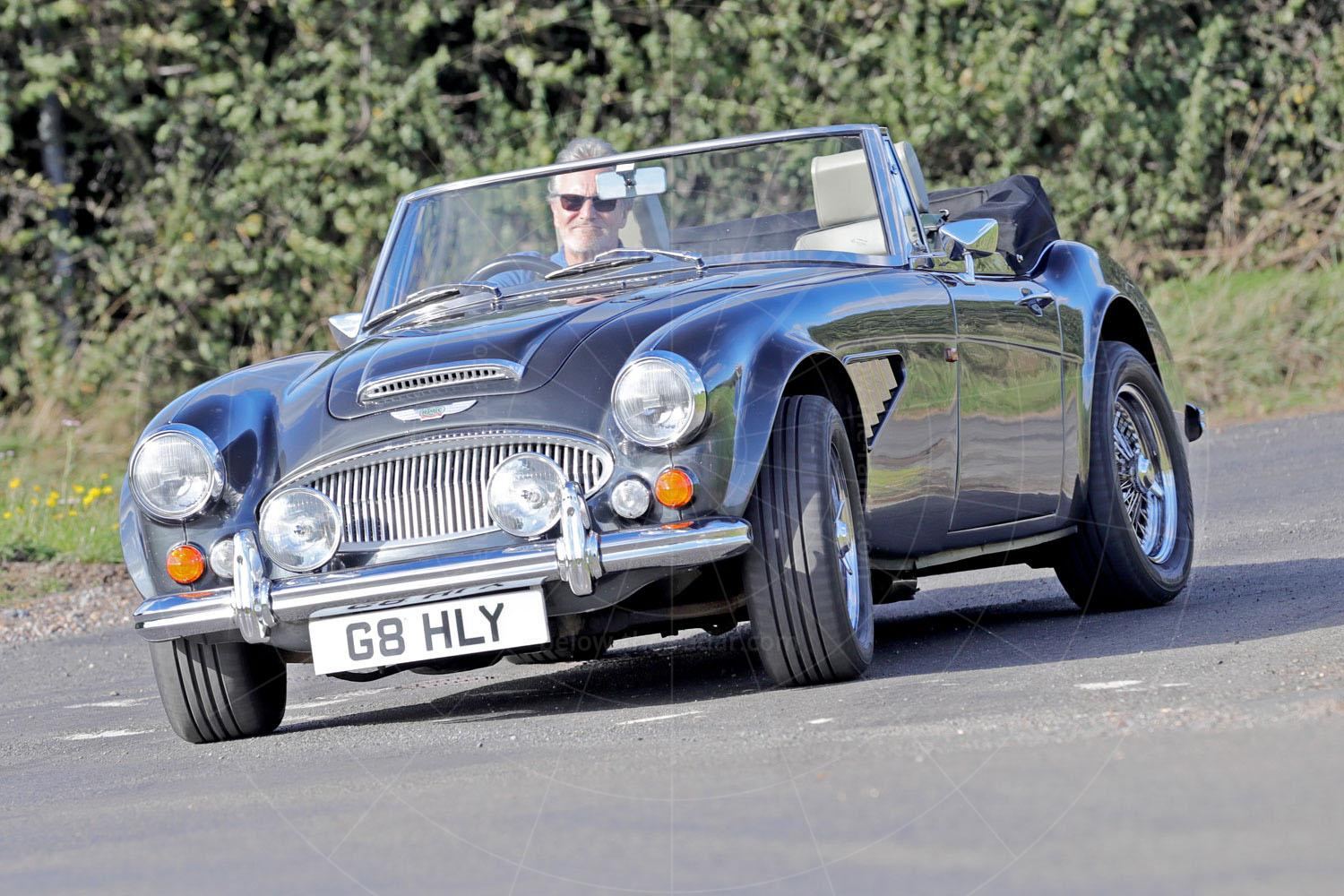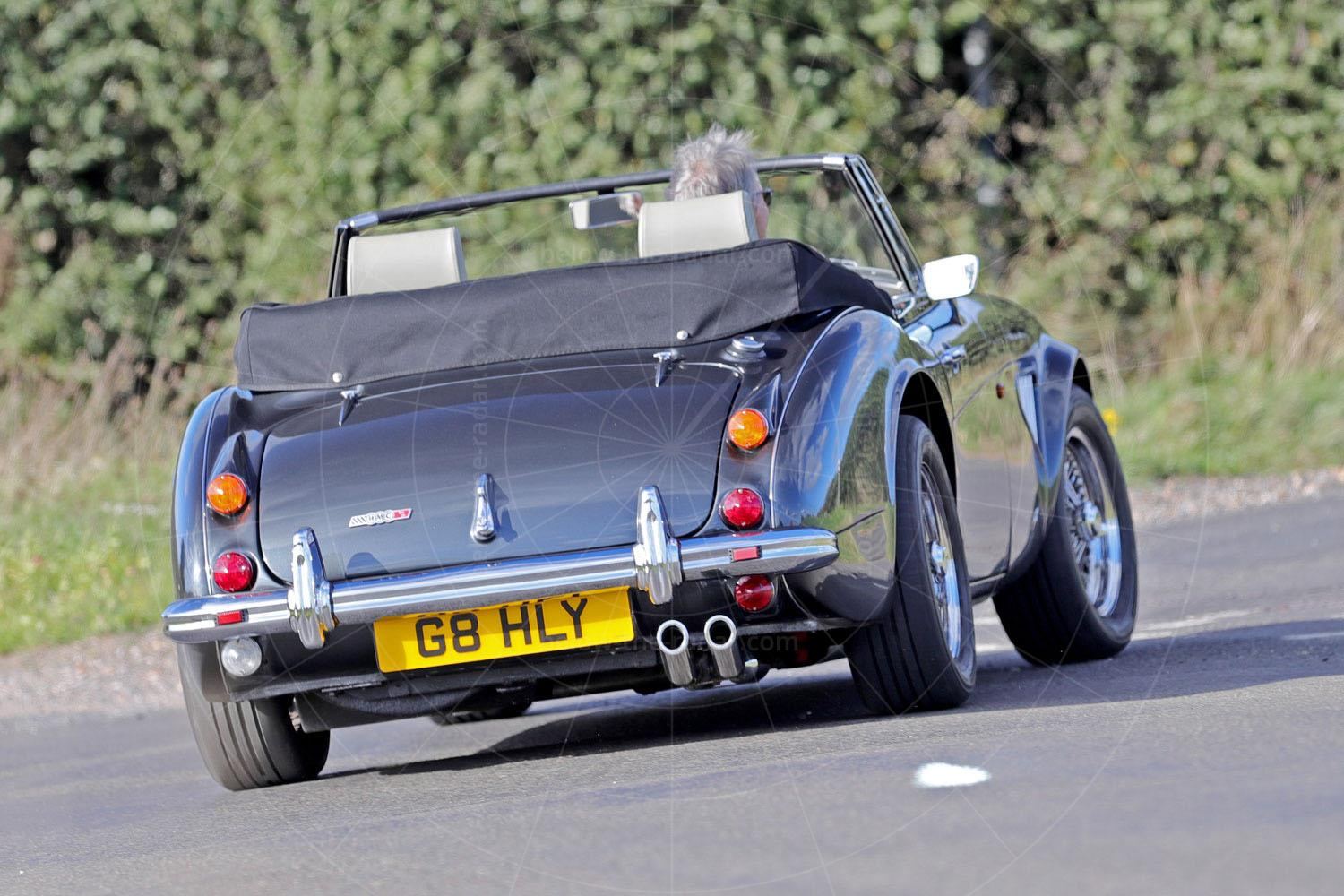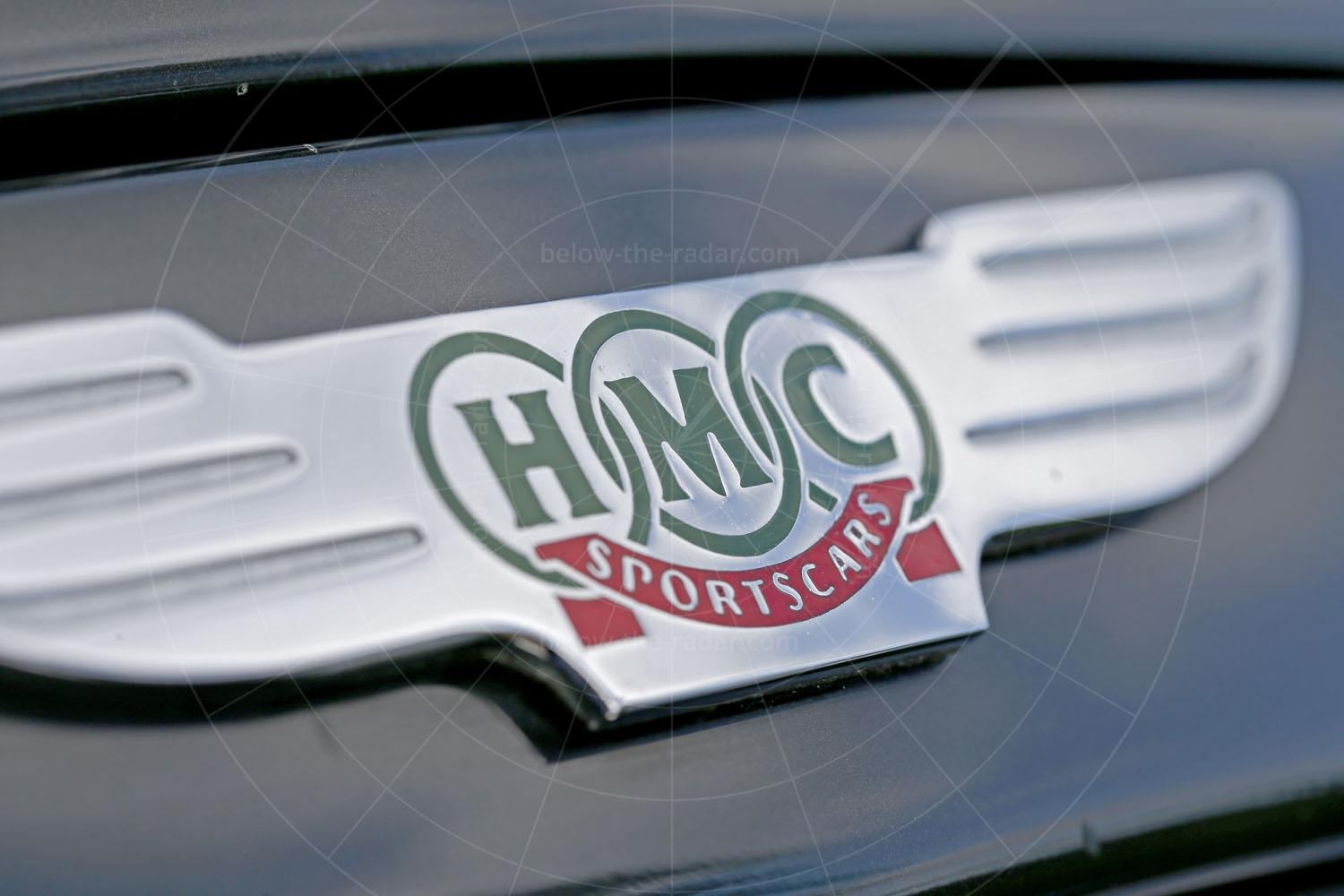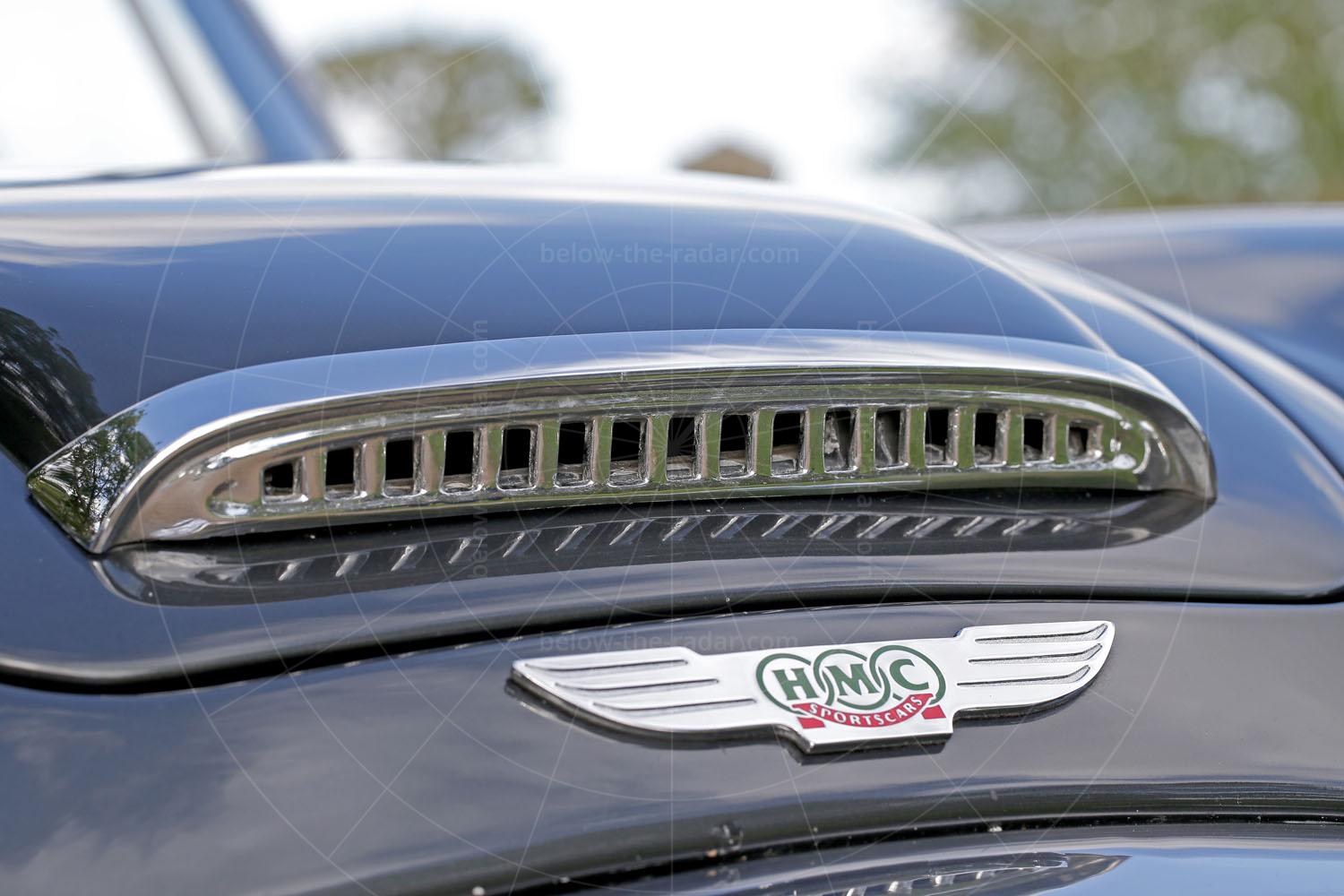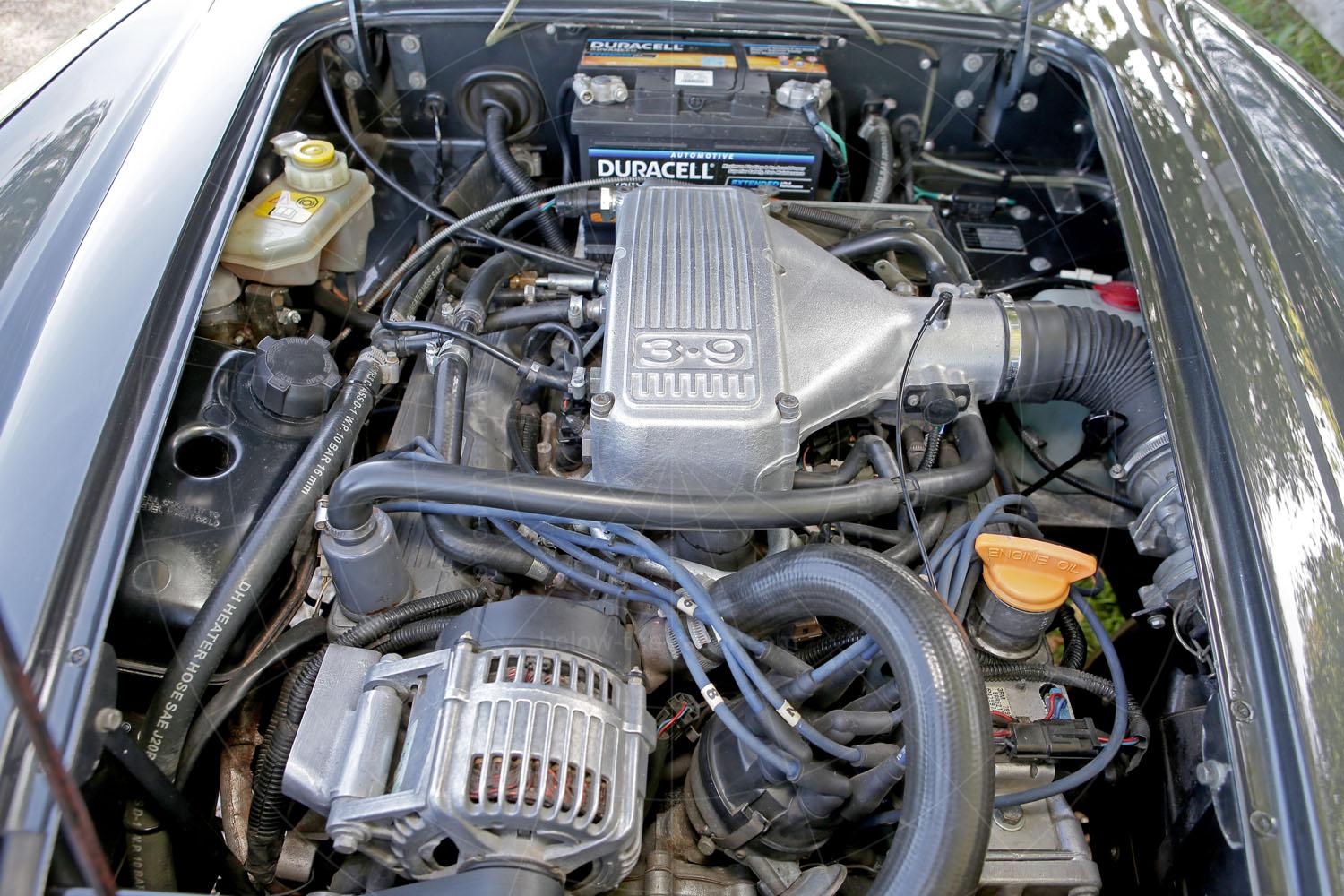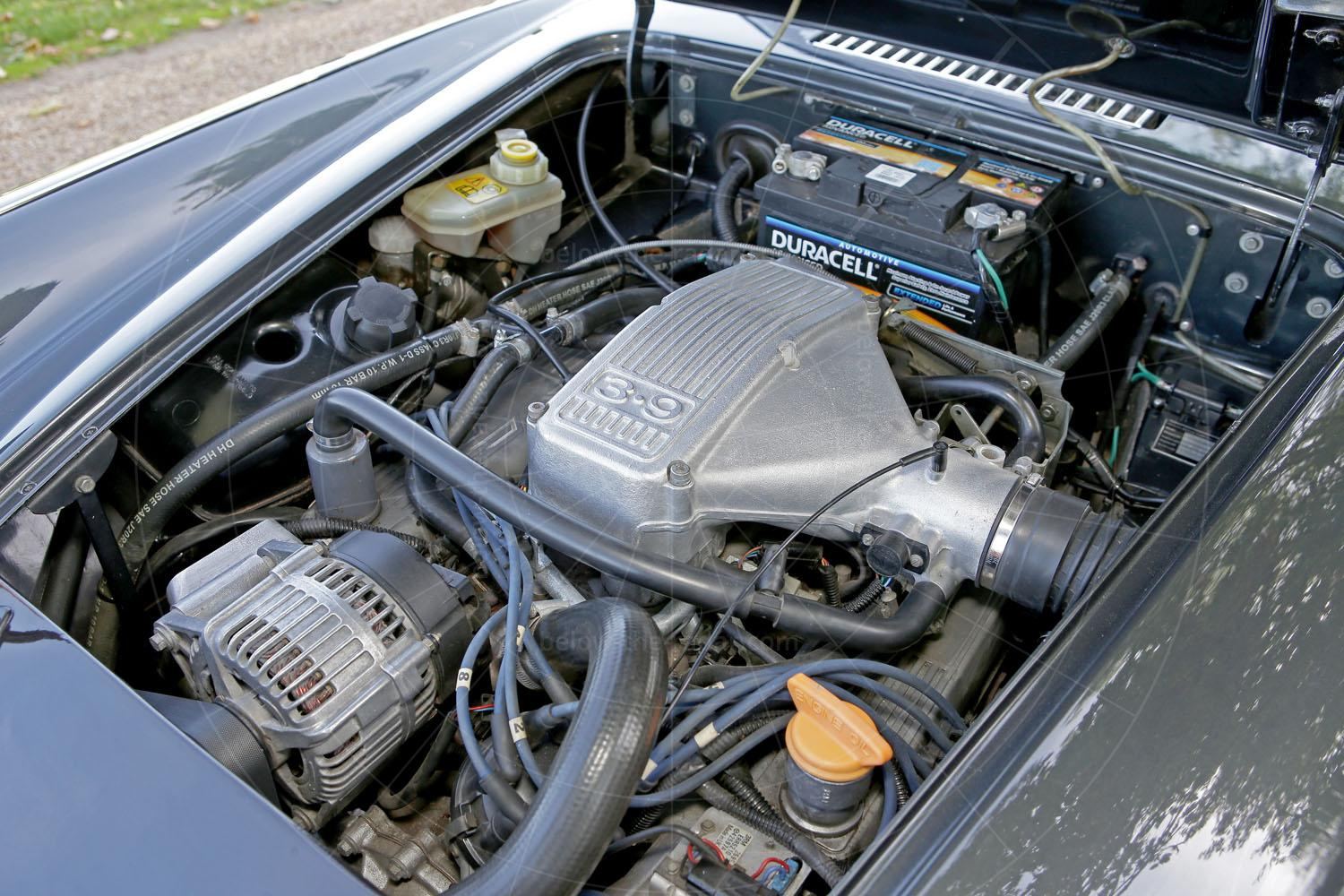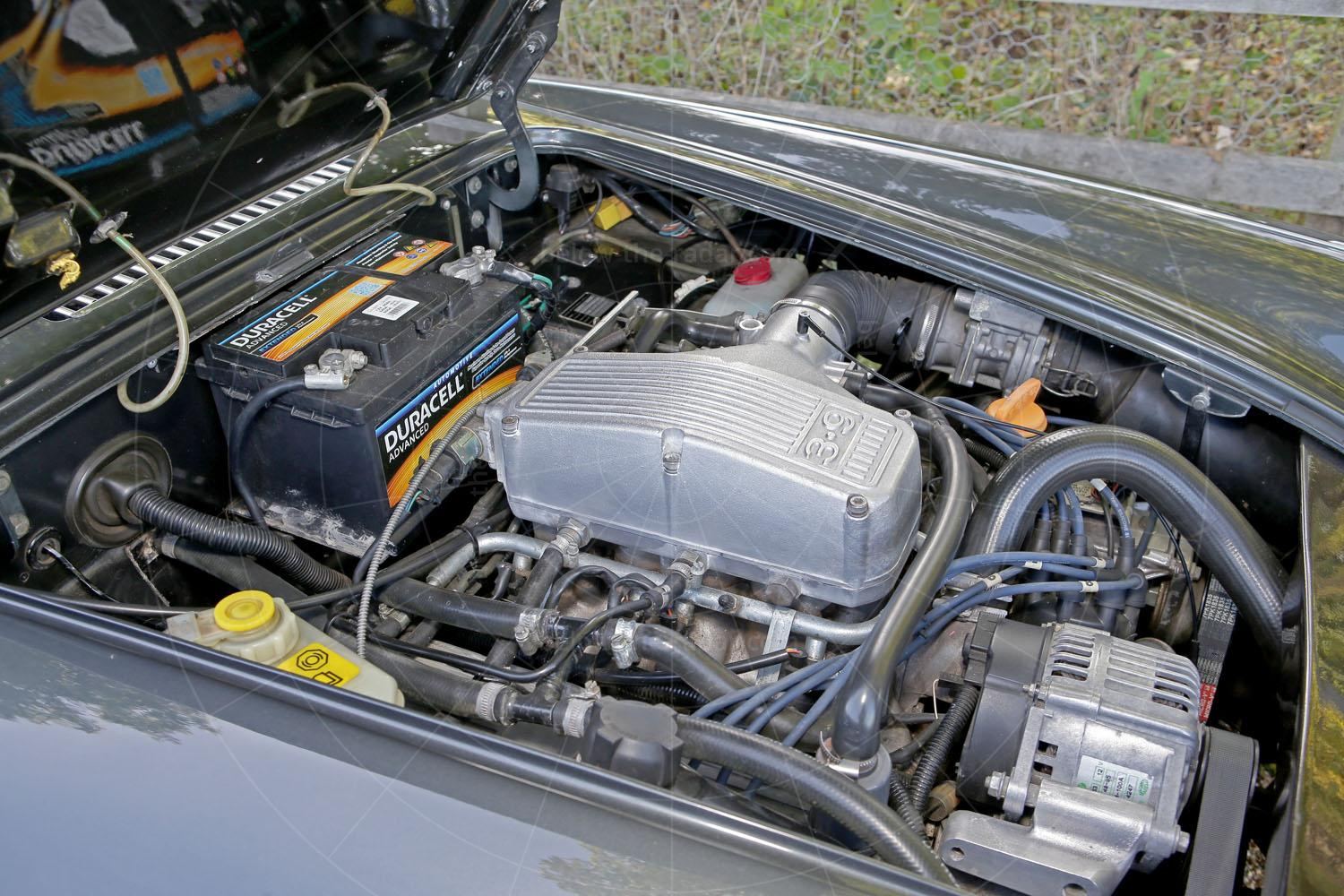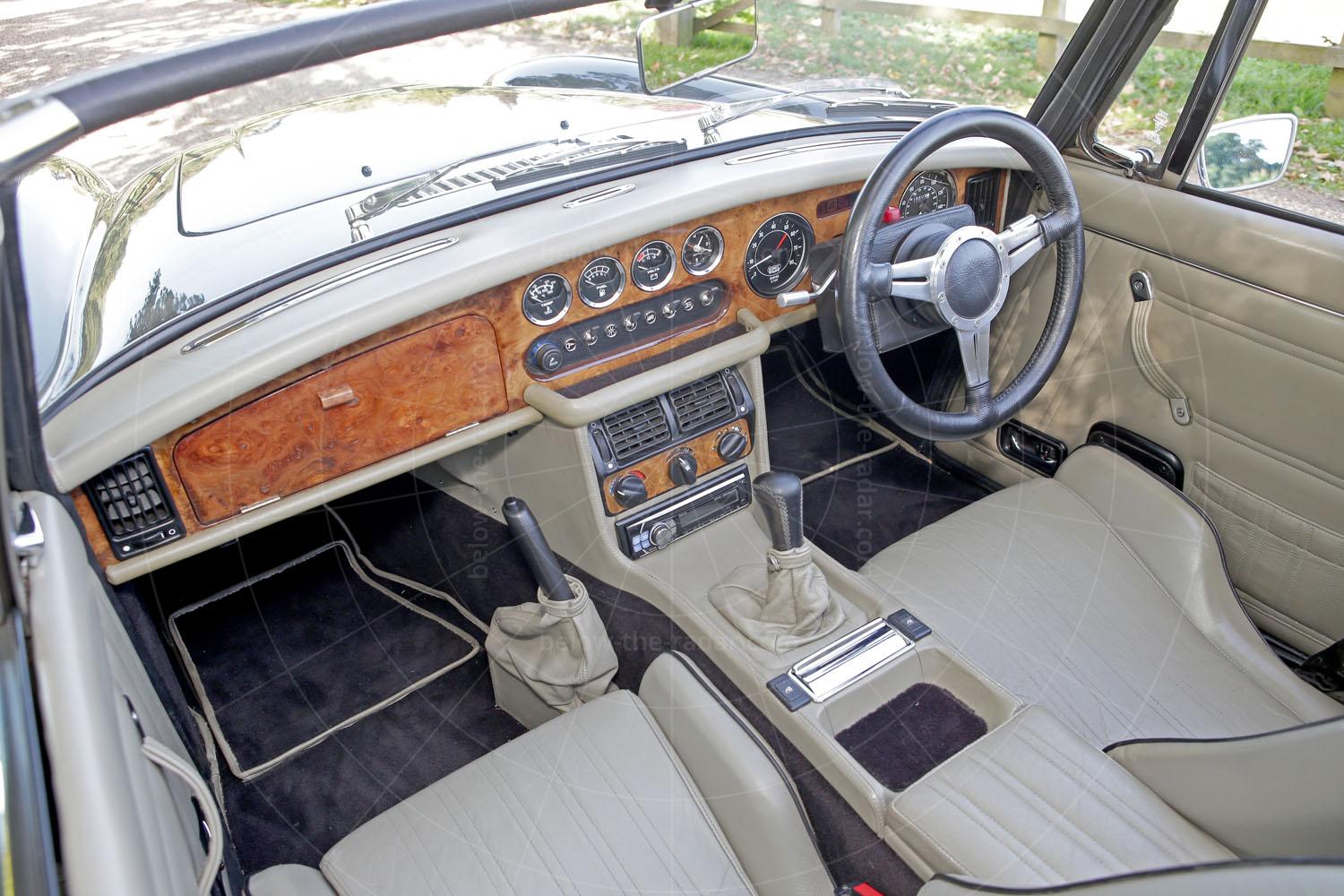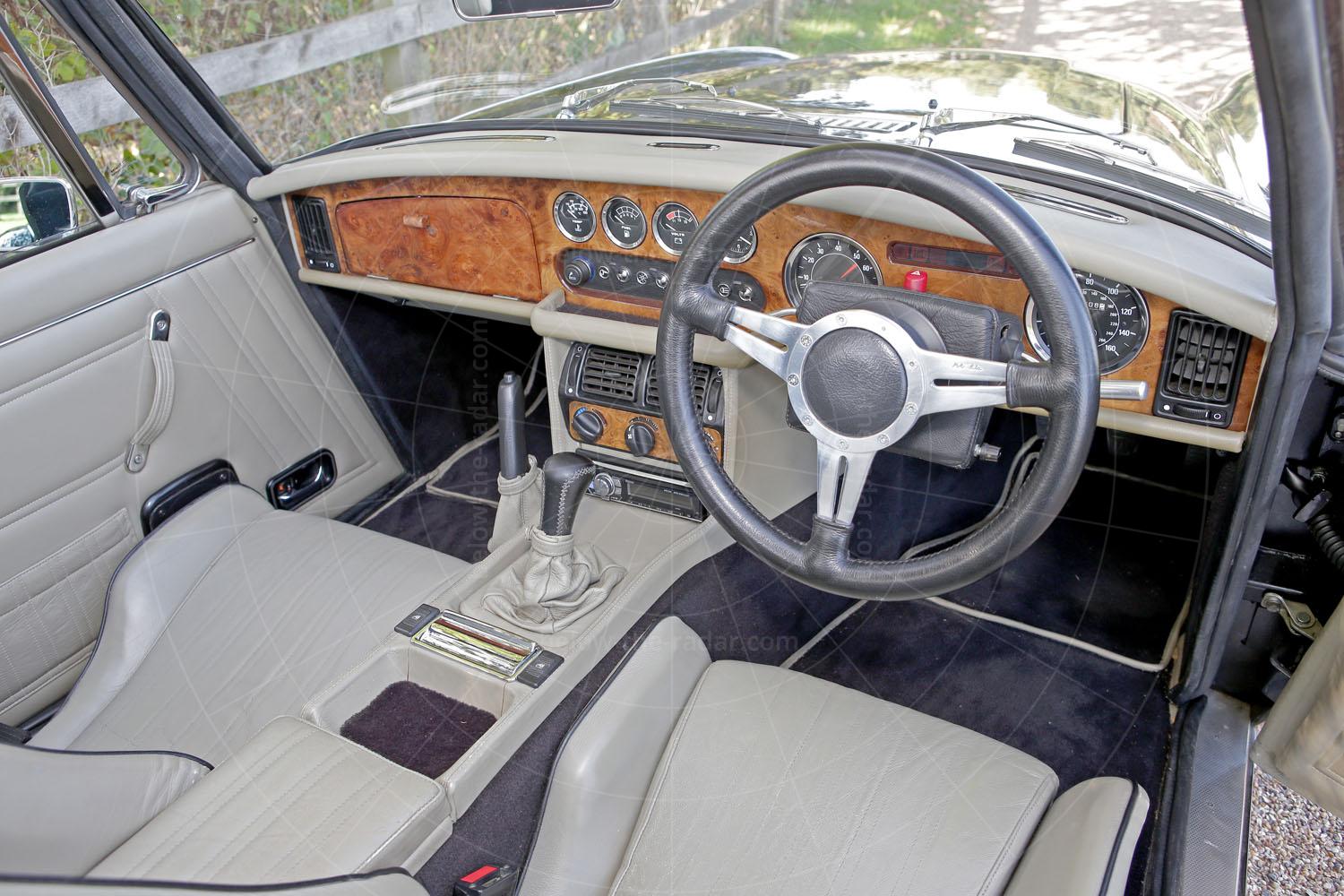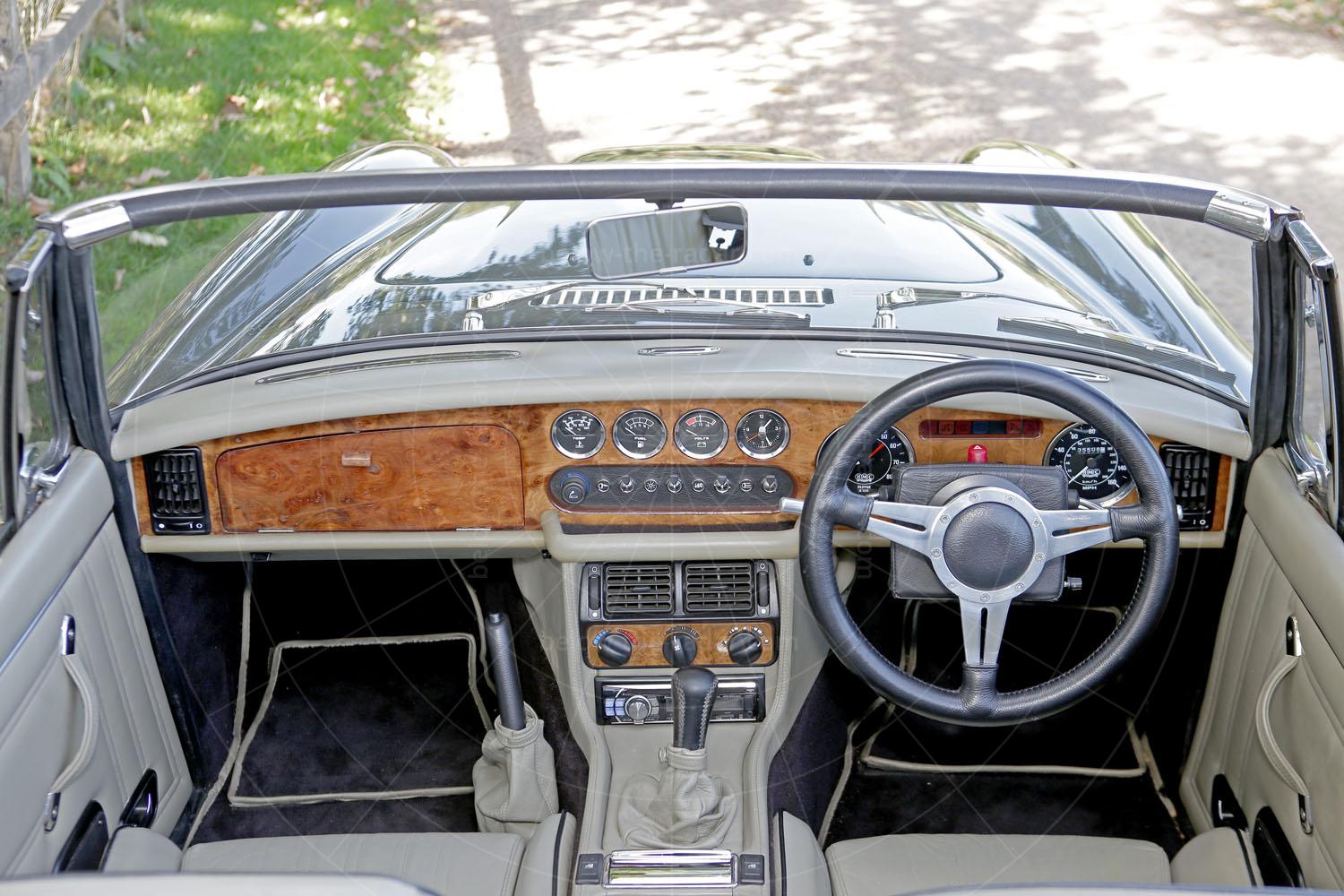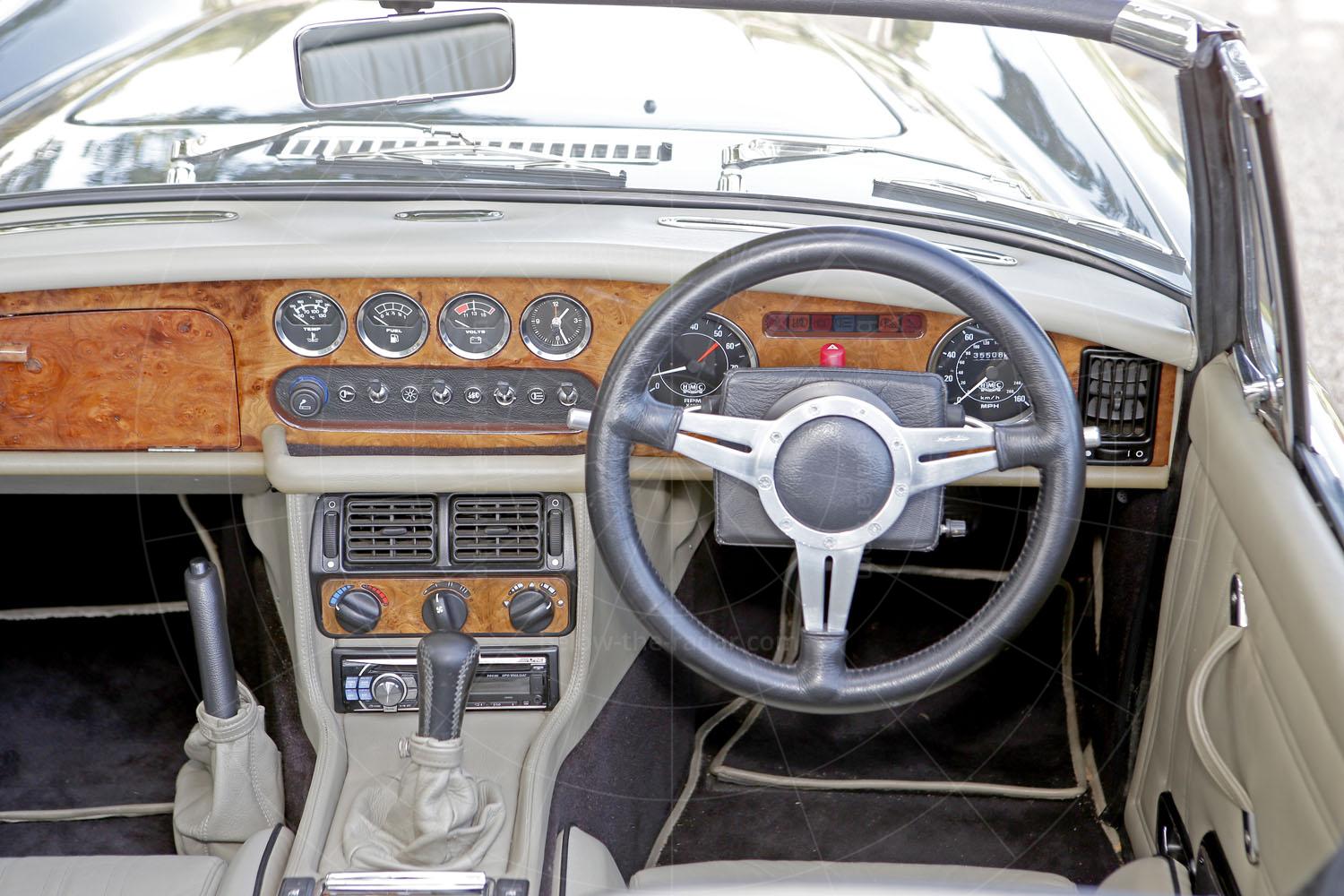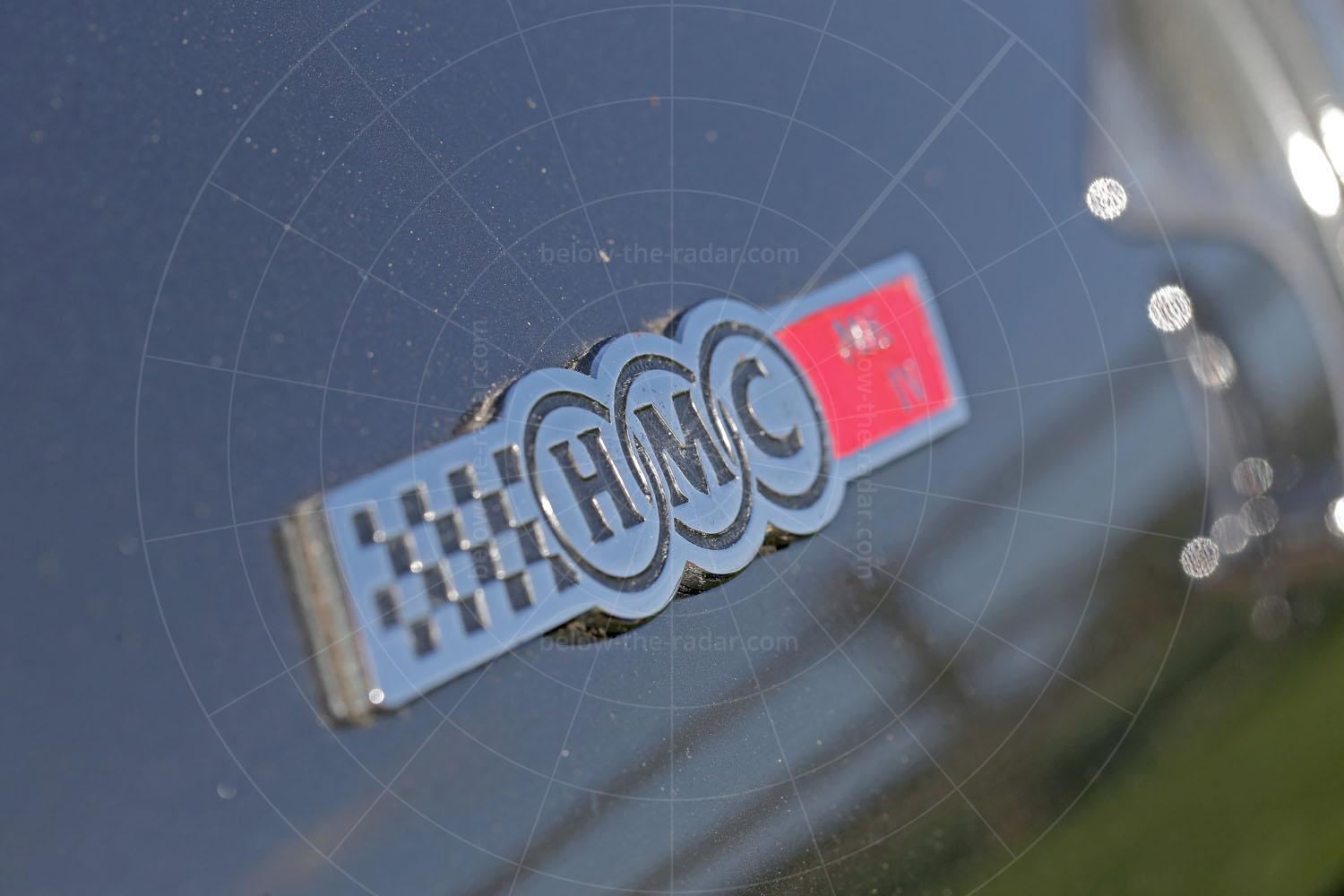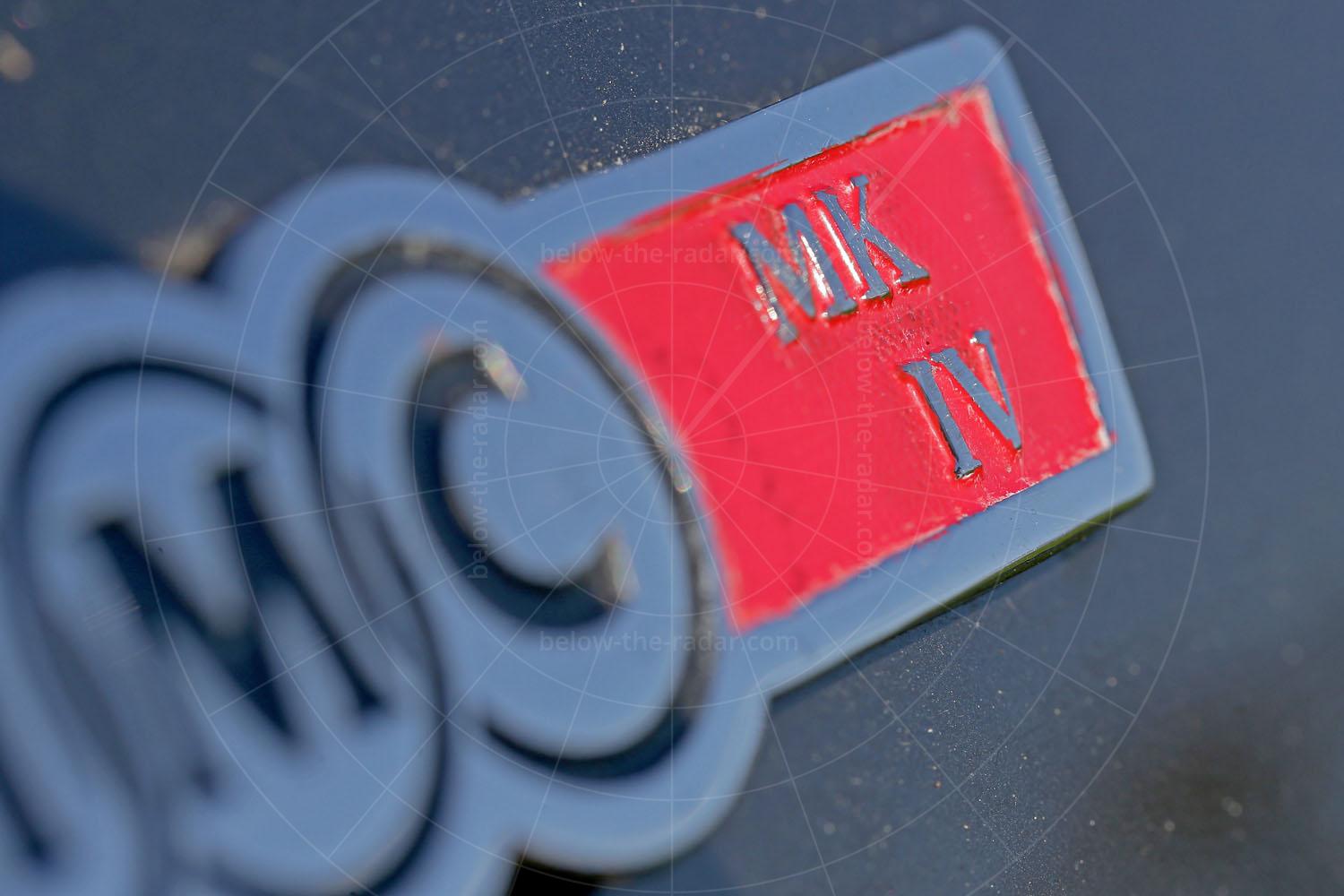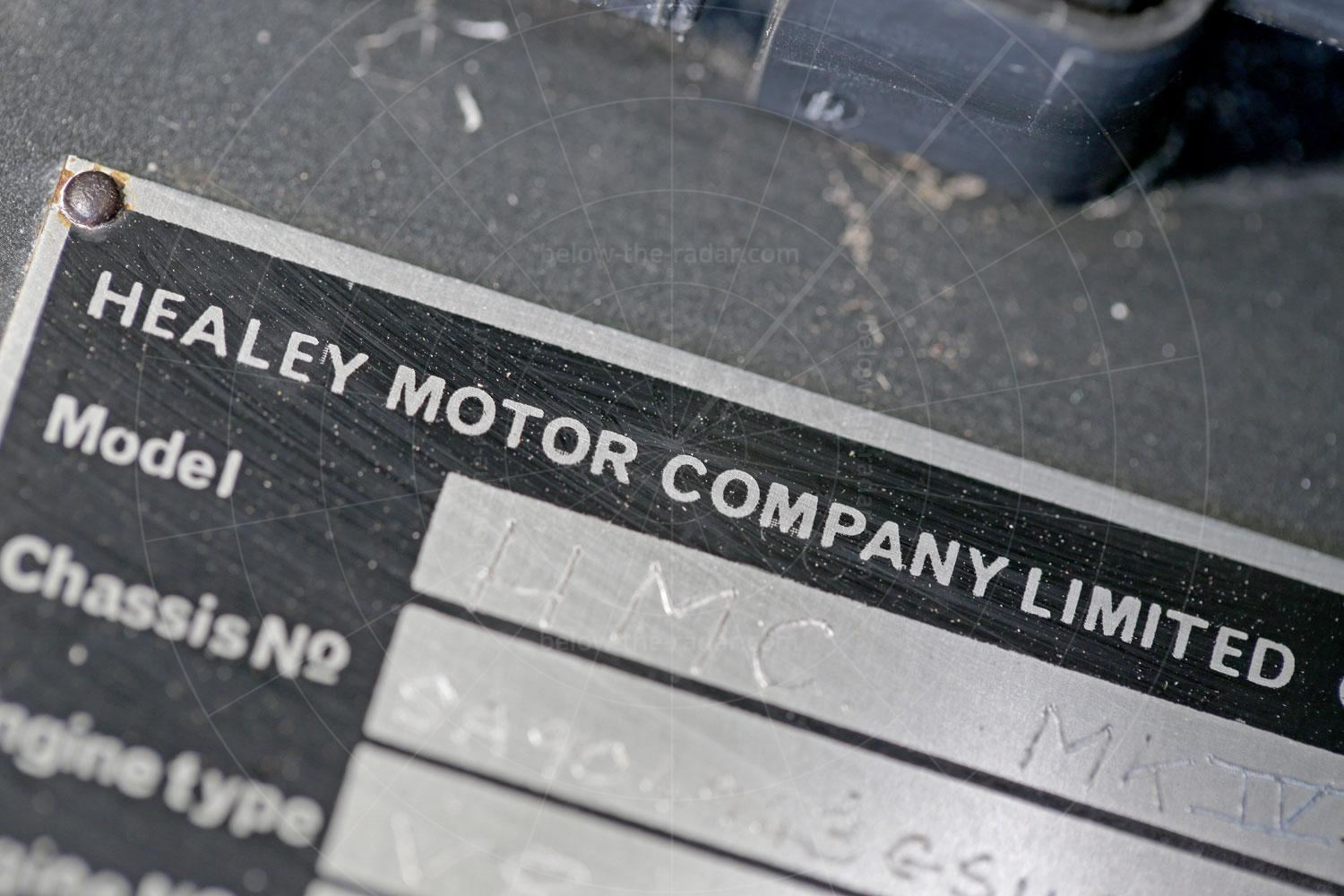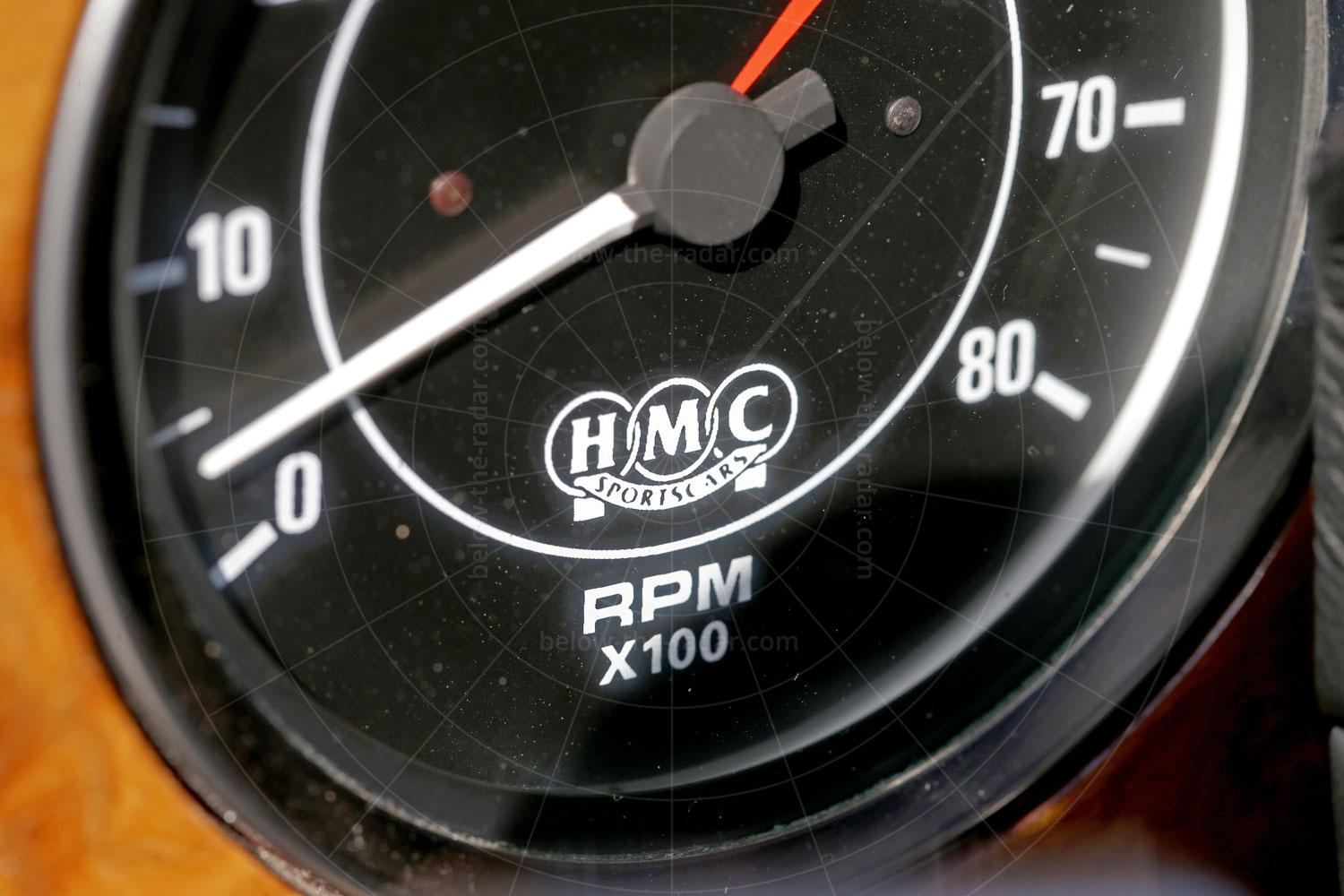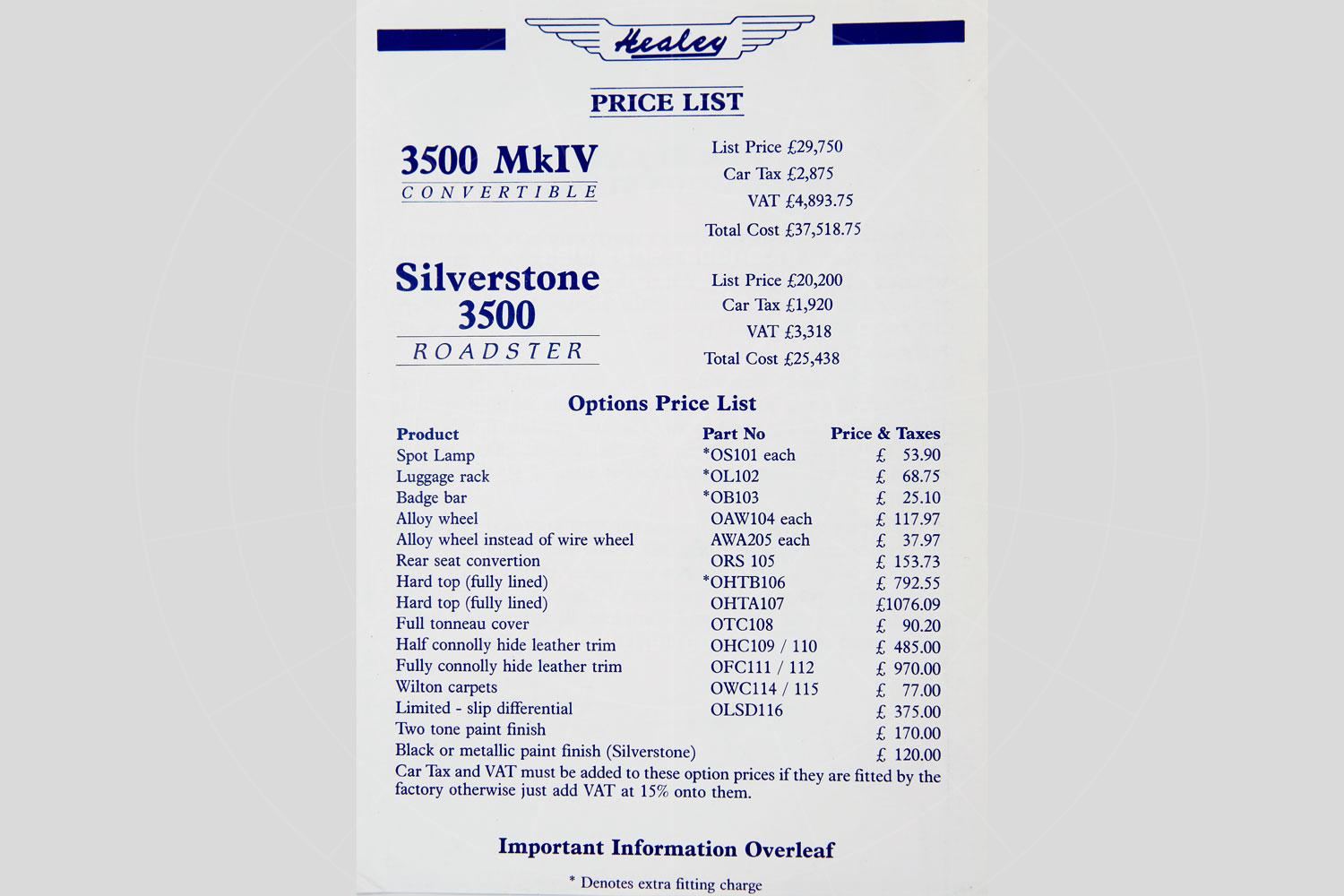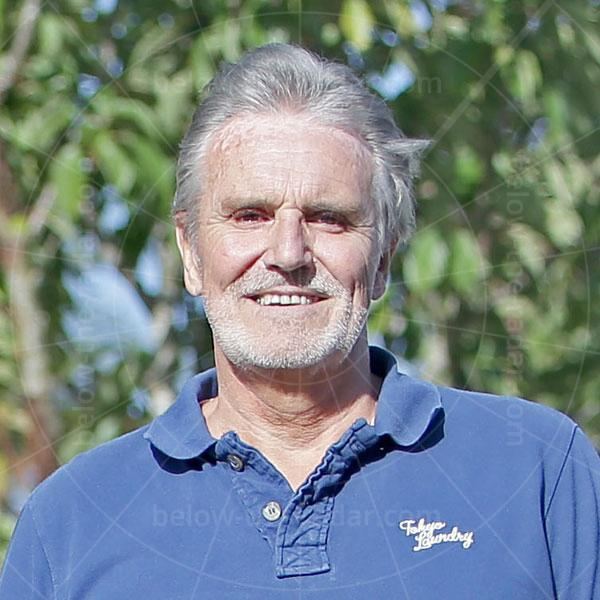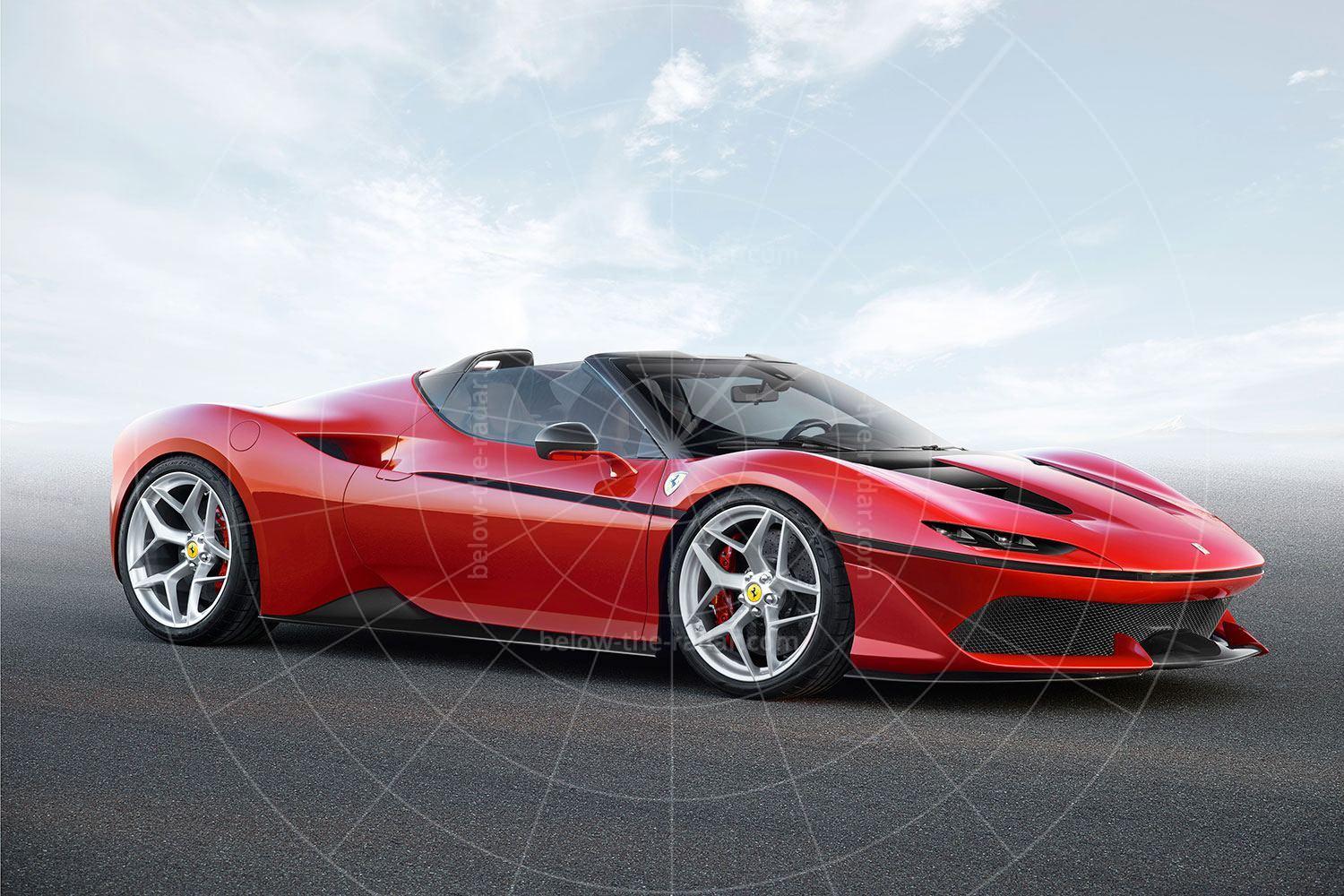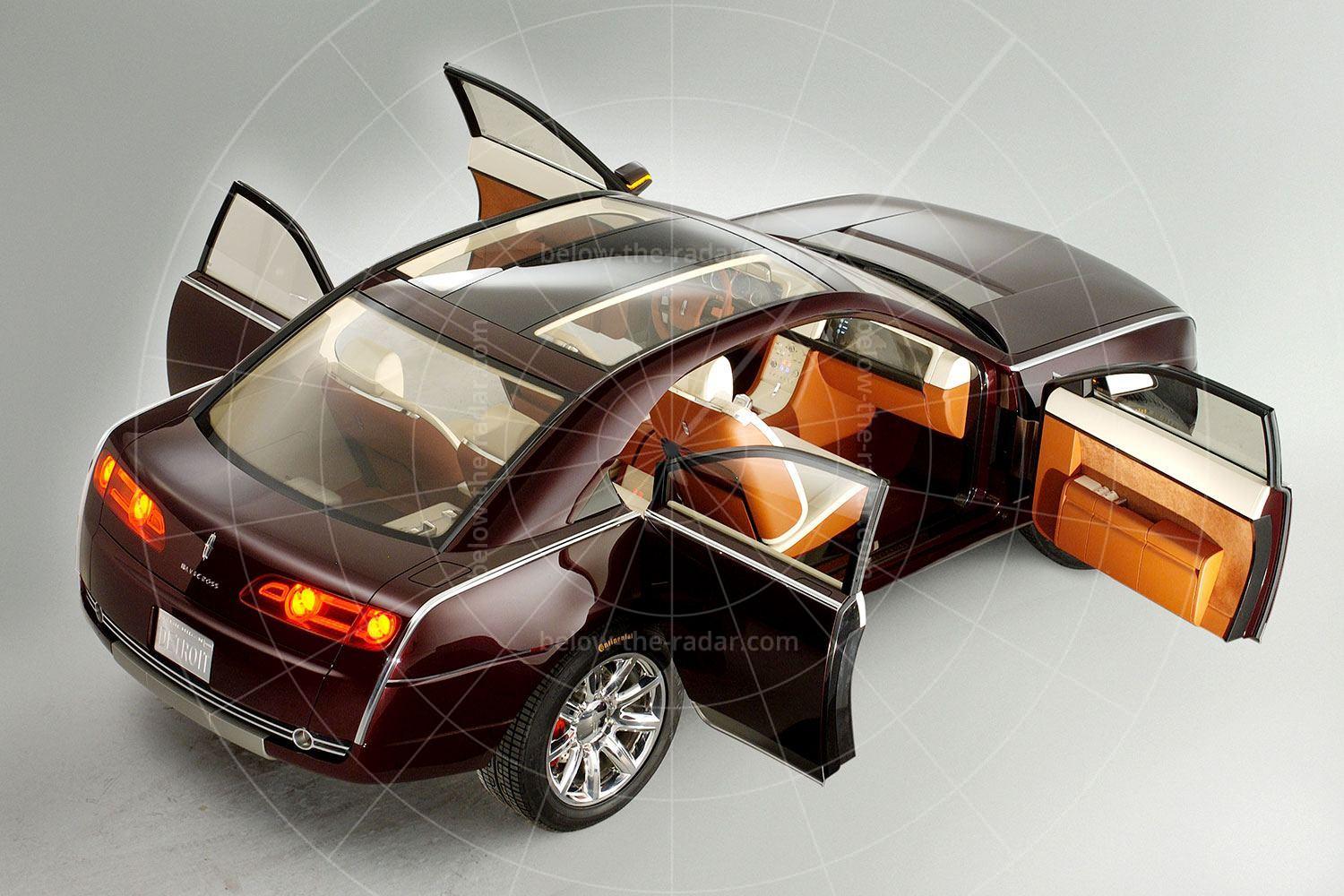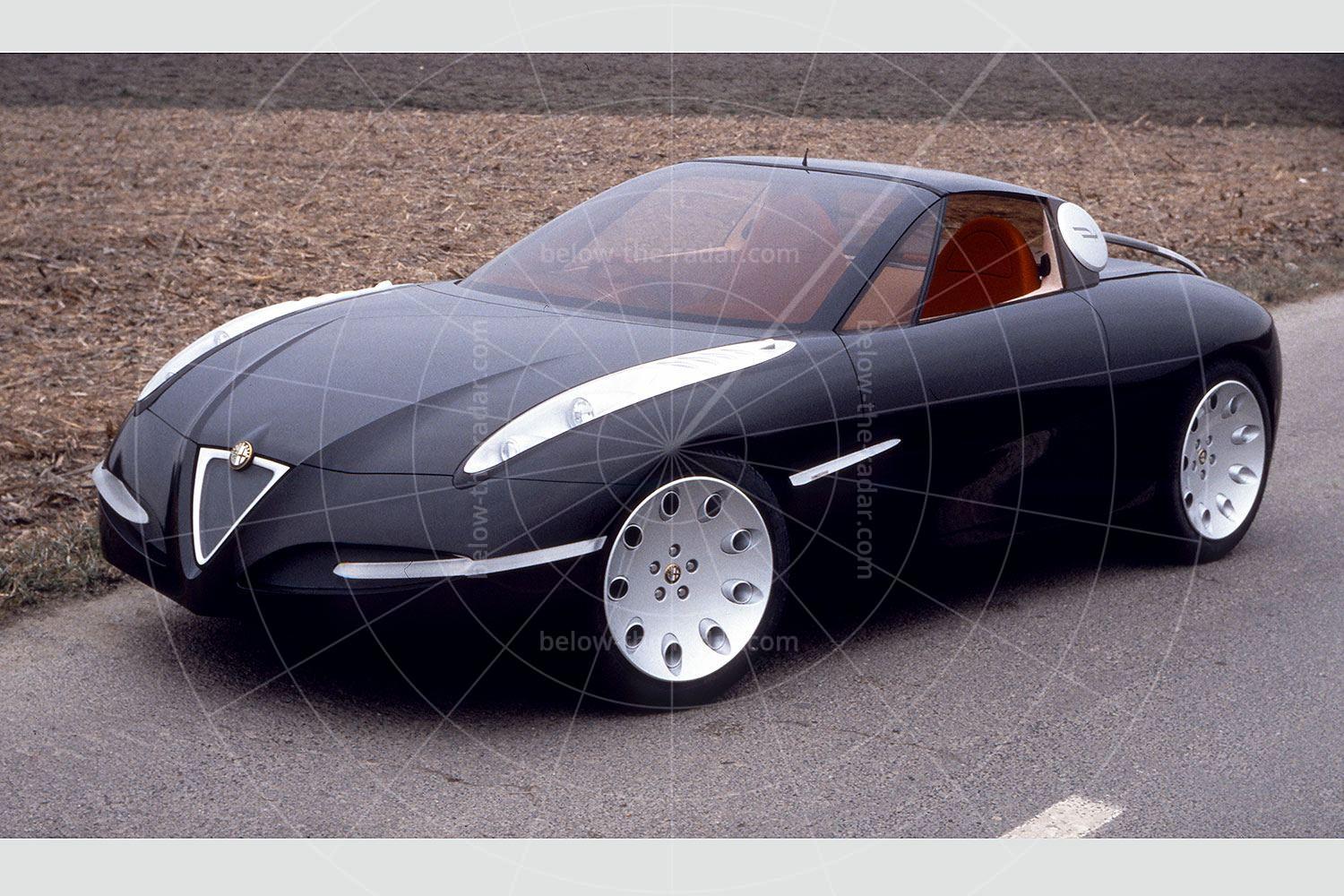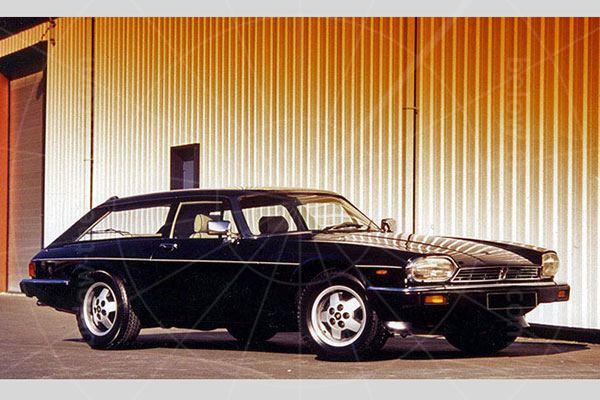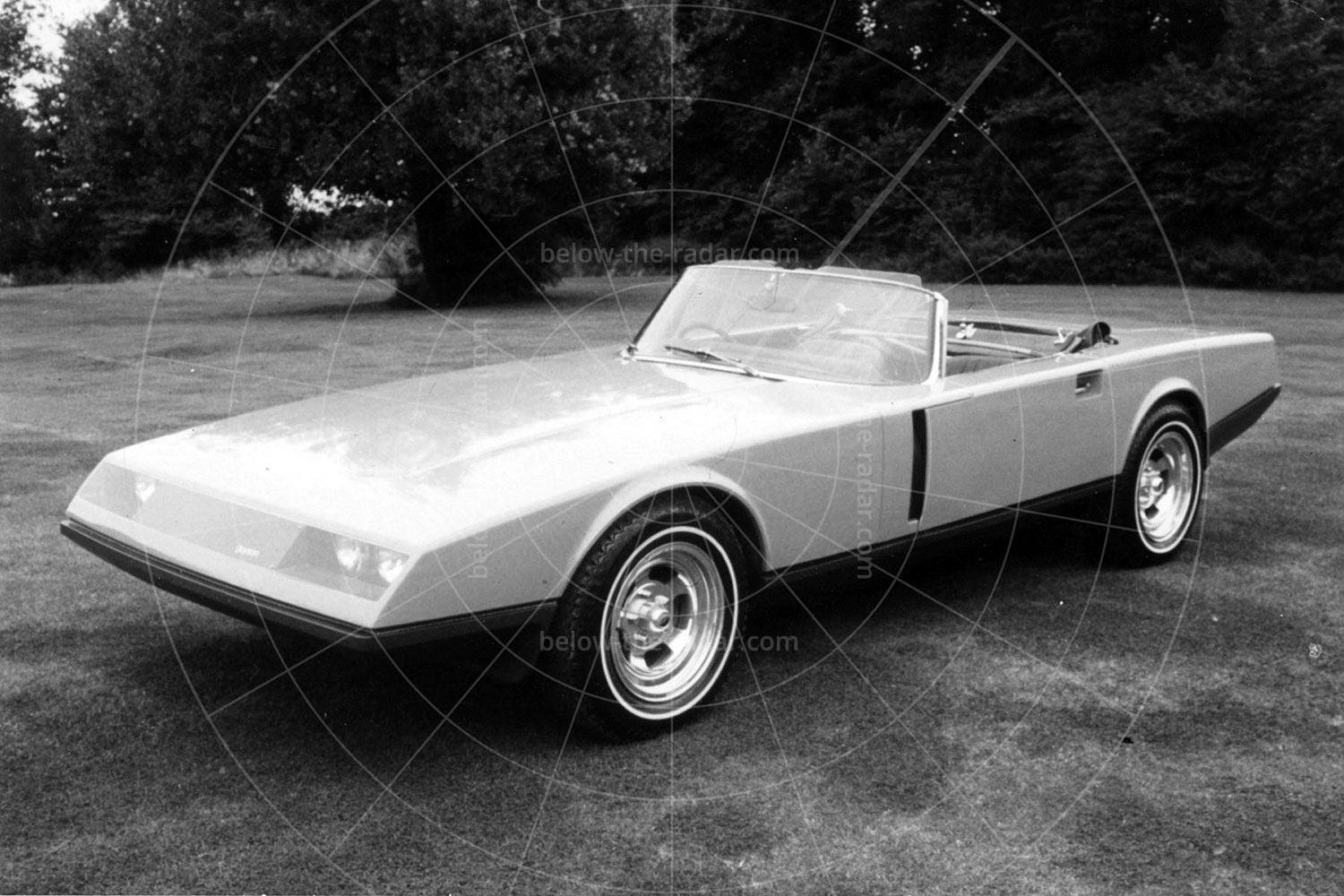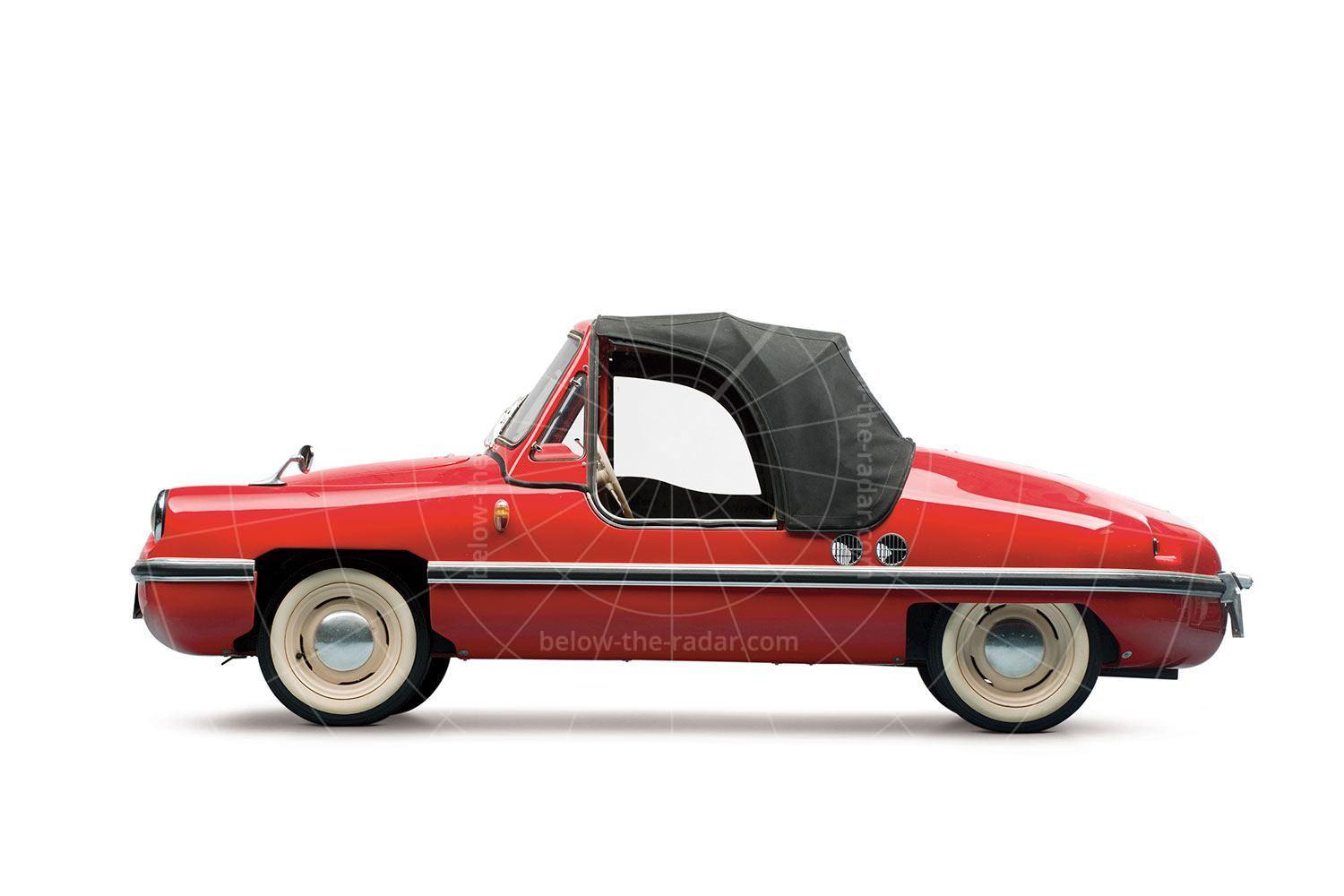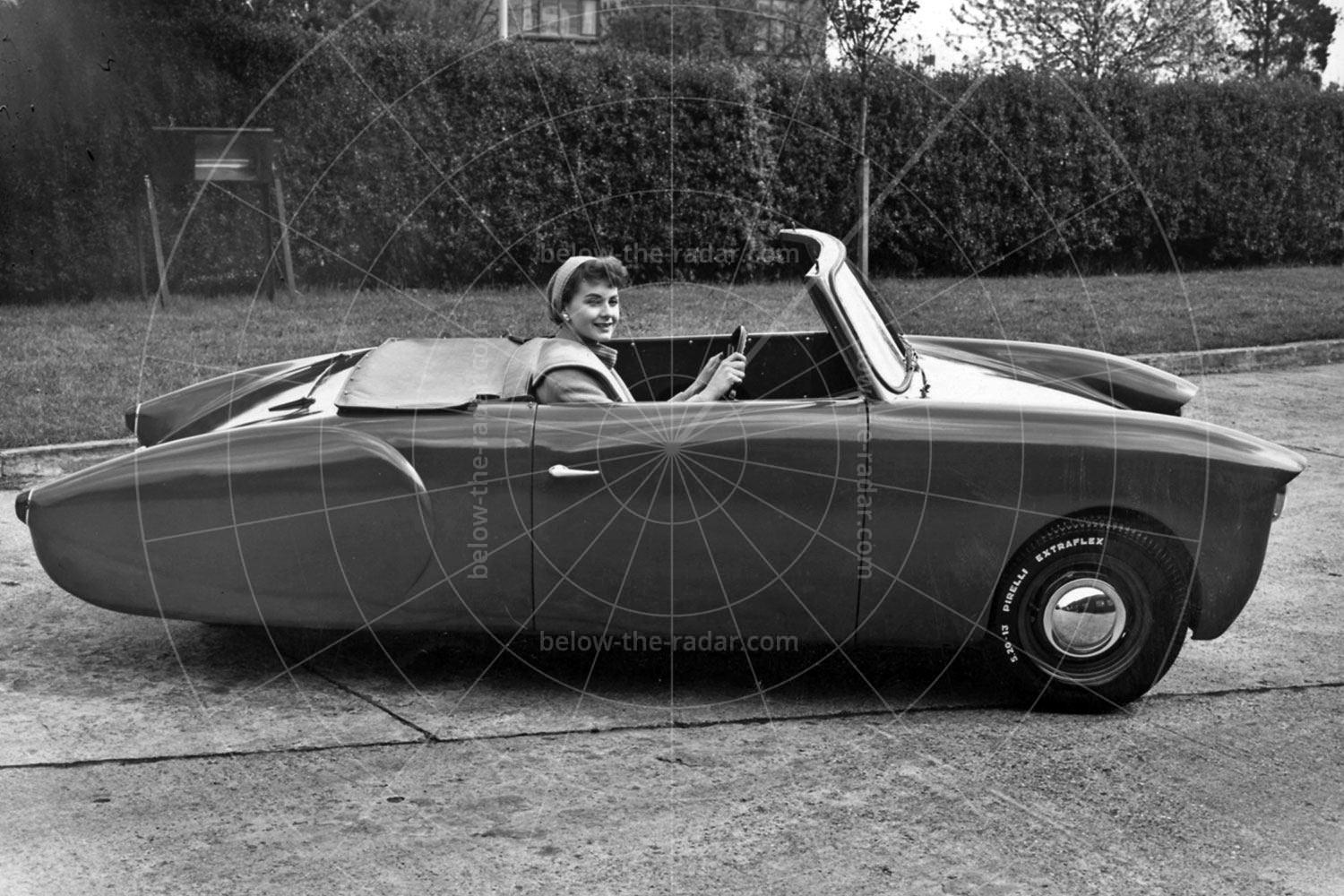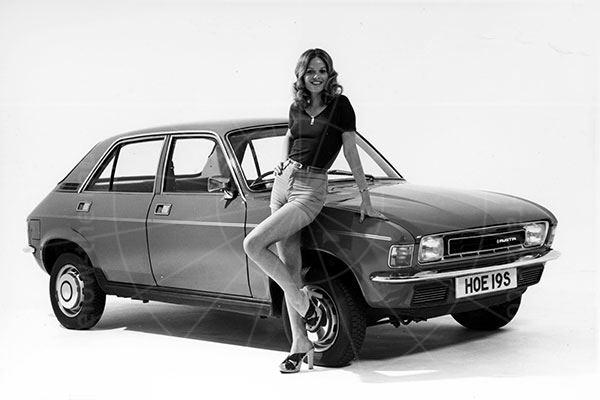It all started when I purchased an HMC MkIV in 2018. I quickly realised that hardly anyone seemed to know anything about these cars; at shows people would constantly ask me if my car was an Austin Healey or a kit car. The answer is – neither. The HMC would have been called a Healey had it not been for a legal dispute, but if nothing else, it continued the Healey legacy further than most people thought, past collaborations with Austin and Jensen.
The Austin Healey story started in October 1952, when sports car entrepreneur and racing driver Donald Healey displayed his Healey 100 at the Earls Court motor show. Leonard Lord, boss of Austin, was so taken with it that by the end of the show the two men had struck a deal for the car to be manufactured at a BMC factory, and to be renamed Austin Healey.
Fifteen years later, forthcoming US safety legislation dictated that certain design changes be made to UK-produced sports cars to meet these safety standards. As BMC (which would imminently become British Leyland) already had Jaguar, MG and Triumph sports cars within its Group, it was decided to call time on Austin Healey and the 3000 MkIII was axed in 1967.
Donald Healey left to join Jensen as chairman (the company had been supplying all the steel body panels for the Austin Healey since the 1950s) and the result was the Jensen Healey, built between 1972 and 1976. This new car fell short of expectations in many ways; its introduction only led to enthusiasts wanting the Austin Healey 3000 to return even more.
Over the following years, Donald and his son Geoffrey were regularly asked when a successor to the 3000 would appear, and several companies approached them with a view to co-operating on a joint venture, but for various reasons nothing came to fruition. Several firms such as Haldane, Pilgrim and Sebring offered Healey-esque and not so Healey-esque kits, but none came anywhere near to gaining the approval of the Healey family or car enthusiasts. Until…
The HMC (Healey Motor Company) story begins with a small car company in the West Country called Harrier Cars, run by brothers Graham and Peter Holmes, with backgrounds in aeronautical engineering and car restoration respectively. Peter bought an inexpensive Healey to use for hillclimbs and sprints. It had been fitted with a Daimler V8 and alloy panels, and to his amazement he found it was 10 seconds quicker than the MkIII Austin Healeys he was racing against, which had similar power. With this in mind they started to build their own car and 12 months later, in June 1985, they showed it at the Motor 100 event at Silverstone (celebrating 100 years of motoring), which resulted in 500 enquiries.
What they learned was that they had built the right car but the wrong model; it was a rally replica using MGB running gear, but it was very clear from the response that serious customers wanted a much more refined car.
Donald Healey first saw this car two weeks later at a Healey International Weekend at Brands Hatch and he loved it, but he was embarrassed that he thought it was a genuine Austin Healey 3000 when he started praising it!
As a result of the response from those events, the Holmes brothers set about the task of designing their own interpretation of the Big Healey, with a brief to make it as up to date and luxurious as possible. It would be a clean-sheet design with a bespoke rather than a proprietary chassis, and it would look a lot like a genuine Healey but with modern tweaks. Donald made a number of criticisms which the Holmes brothers took on board, and he was very enthusiastic about the new car as it was developed, but unfortunately he died before the car was finished.
With designs finalised, the ‘Healey Motor Company Limited GB’ was registered, with Geoffrey Healey agreeing to endorse the product and license the trademark, joining the Holmes brothers as a company director. Their intention was to produce the long-awaited official successor to the Austin Healey 3000 MkIII: a factory-built sports car tastefully updated from its 1960s design to incorporate 1990s technology, thus making it thoroughly usable and reliable.
In Motor Sport (May 1989) Geoffrey was quoted as saying: "I think you should describe it as an evolution; my father Donald would have approved of that. It’s a modern version of the car British Leyland stopped making in 1967, and it’s where I suppose the car would have got to if it had stayed in production."
In 1989 a new factory was earmarked, chassis plates were struck and 3000 brochures were printed for two new models: the Healey MkIV and the lightweight Silverstone. A foreword in the brochure by Geoffrey Healey stated: "I am sure you will agree with me that both models are of outstanding quality and worthy of carrying the name Healey forward into the future”.
A launch was announced to the press, but two days beforehand they received a solicitor’s letter from Jensen contesting the ownership of the Healey trademark. Rather than cancel the launch, it went ahead with a declaration to contest the claim from Jensen. But with neither Jensen nor the Healey family having the funds to fight their corner, it was agreed to continue trading as the Healey Motor Company, but not badge the cars as Healey, hence the cars carried a Healey chassis plate but were badged HMC (Healey Motor Company).
It was three years later that Geoffrey finally won the legal battle, but by that time HMC Sportscars had been registered, so it was decided to carry on trading as HMC rather than revert to Healey, to avoid confusion. New brochures were printed to that effect.
Production started in 1992, with sales driven exclusively by the German market, where type approval for low-volume production cars was available; at the time there was no such system in the UK. With all cars going abroad in left-hand drive form, HMC remained virtually unknown in Britain. When the UK finally introduced its own low-volume type approval scheme, HMC embarked on a development plan to obtain certification to open up the UK market.
The UK was always going to be a difficult market for a new car which looked like an older car, simply because all previous attempts had been available only as kit cars. Also, the HMC would have to retail at more than £40,000, which was rather expensive considering that for the same money you could buy three Mazda MX5s, two MGFs or the very best restored Austin Healey 3000.
Nevertheless, in 1996 with right-hand drive car production now under way, it was my car (chassis 0051), that was the first to be offered and registered for sale to the UK public, which is why it became the official UK press launch car. Registered H1 AEG (All Electric Garages in Birmingham was the sole UK agent at the time), the car featured in countless newspaper and motoring magazines enjoying complimentary press coverage, and was widely regarded as an extremely capable modern sports car in its own right.
When David Vivian drove the HMC for Complete Car in January 1996 he wrote: "Will someone please explain to me what’s so heinous about building a Healey for the ‘90s?” Four months later, in Performance Car Roger Bell said: "Praise doesn’t come much higher for a car that turns every journey into a memorable experience, I adore it."
The MkIV also featured on BBC’s Top Gear in 1996, where Quentin Willson road tested it and stated "No Austin Healey was ever this well built, and specialist sports car manufacturers like Lotus and TVR should take a long hard look at the HMC to see how it really should be done."
John Leek, MD of All Electric Garages, promoted this car for about 18 months, enthusiastically making sure as many people knew about the new ‘Healey’ as possible, stating: “Every HMC that has been sold to date is a direct result of having road tested this actual car."
Nobody seemed to care that it didn’t have a Healey badge, because the press and the buying public loved it. The HMC drove really well, with precise handling and a firm but forgiving ride; this was a car that could be enjoyed without worrying whether it was going to break down or your spine would suffer. Also, because it wasn’t made of metal, it could be left out in the rain, unlike an original Healey.
The HMC was hand-built to extremely high standards; the company claimed that it could match the production quality of bespoke aircraft. Each car took about 400 hours to make, and used more than £17,000-worth of raw materials. The production team consisted of 25 skilled craftsmen who were based in a factory in Stroud, Gloucestershire.
The back-bone chassis was made from 40x40mm box section with an average wall thickness of 2.9mm; it featured a reinforced bulkhead and impact-absorbing bumper sub-structures. Every exposed component was protected to BS 1755, which meant that it wasn’t allowed to show signs of corrosion until it had been immersed in salt water for 1112 hours. The brightwork was fashioned from stainless steel or chrome-plated gunmetal, while the bodyshells were moulded from glass-reinforced plastic (GRP), and strengthened where needed with Kevlar. Fire-retardant resins were used in vulnerable areas, with high-temperature composites used for all external panels, which were also force cured to give extra stability. All body materials had approval from the TUV (Germany’s equivalent of the Department of Transport) for resistance to shattering and fire.
HMC’s control over quality was further tightened by the large number of components it made in-house. These included seat and windscreen frames, bumper sections, quarter-light assemblies, wiring harnesses, stainless steel exhaust systems, hoods, and the rear suspension’s semi-trailing arms. The differential, however, was sourced from the Ford Scorpio, as was the unequal-length wishbone front suspension along with the rack-and-pinion steering. There were anti-roll bars front and rear and gas-filled dampers all round, plus large disc brakes which were ventilated at the front and solid at the back. These had all the cooling they needed through the 6x15in 72-spoke centre-locking wire wheels.
A born-again Healey was a deserving if unlikely candidate for Rover’s 3.9-litre all-aluminium V8 engine. The catalysed Rover lump sits well back in the chassis and still has it where it counts: eight cylinders, computer-controlled fuel injection with programmed electronic ignition, 190bhp at 5250rpm and 226lbft of torque at 3500rpm. This impressive amount of torque makes motorway cruising a pleasure, and with a 140mph top speed and 0-60 time of under six seconds, it could quite respectably return 25mpg.
Even standing still, an HMC can put a blip in your pulse rate. You feel anticipation, tension and a sense of occasion merely unlocking the door and clambering awkwardly behind the leather and chrome Moto-Lita steering wheel. Apprehension hovers above your shoulders, that motor sounds mighty powerful; will you be able to see over the high scuttle and master what might be a recalcitrant gear change? No worries on any count. The gear change is a peach, the clutch well cushioned, the curvy bonnet remarkably easy to place.
No hint of old-car tantrums either, as the big V8 fires up and settles to an only slightly lumpy tick over. Through some clever exhaust tuning, the Rover V8 burbles coarsely, almost huskily, under its breath – much like the Austin Healey’s big old straight-six engine. Blip the throttle and the resulting bark is drainpipe hollow, also much like the original. But there is a difference: the volume of the engine’s noise is effectively a couple of notches softer. What you’re left with is a purer, less raw sound.
What HMC succeeded in doing was to smooth away much of the rude mechanical rowdiness that separated the old Austin Healey from its true role as a comfortable, long-distance sportster. This one cruises effortlessly; at 80mph in fifth its engine is turning over at just 3100rpm. In traffic, the big V8 can be disarmingly docile, a benign and un-temperamental force. But how the revs climb when you exercise your right foot, the engine note changing from a warble to a howl; the effect doesn’t just sound right, it feels right too. There’s plenty of push from modest revs too; you sense the engine’s meaty torque doing its job as you cruise past slower traffic. The safety margins are simply huge, the rewards hit home at root level.
That the HMC MkIV has a roundly better chassis than the original Austin Healey 3000 is unsurprising. But it’s rather better than that; except over the worst dips and ruts, the HMC is unreasonably good, combining a distinctly modern level of control with an unexpected talent for filtering out small bumps and ripples. What we have here is stonking straight-line speed, respectable road manners, a powerful aesthetic statement, uncompromised creature comforts and a decent helping of convenience.
The HMC MkIV offers the best of both worlds; a marriage of swooping English curves coupled with turnkey reliability, for the enthusiast who doesn’t want to tinker, but wants to enjoy their ragtop come rain or shine.
But although HMC did a tremendous job of bringing the Big Healey into the 1990s, as time went on, rapidly changing legislation such as stricter emission tests in the UK in particular, became more difficult and expensive to deal with. This, coupled with bad decisions on pricing for both home and overseas markets, together with rising overheads and Rover’s decision to withdraw its V8 from circulation in 2000/1, all finally spelt the end of the road for HMC, and it had to close.
All records were lost when the factory closed, but it is known that in less than 10 years of production only 180 cars were made: 167 MkIVs and a few Silverstone/Lightweight models. The exact number of right-hand drive cars is not known, but with the majority of cars known to be left-hand drive and living in Germany, there appears to be about 40 right-hookers now registered in the UK with a few elsewhere including Sweden, Japan, New Zealand and a couple in Germany, so perhaps fewer than 50 RHD cars were made.
The HMC MKIV is a strange footnote in motoring history, caught somewhere between a modern and a classic. Those in the know recognise how good they are; the many who aren’t just see what appears to be a kit car. That it isn’t badged a Healey doesn’t help, but with values of good cars equivalent to those of a genuine 3000 MkIII, those who get these cars understand just how good they are.

